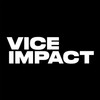Image by Red via Facebook
Since 1988, December 1 has been recognized by NGOs, world governments and large brands as World AIDS day. For more than 30 years, this global day of health care awareness has been an important part for the campaign to stop the spread of HIV, providing much-needed awareness, funding for research and treatment, and ending the stigma for people who are living with HIV/AIDS.Today, the United Nations Executive Director of the Joint UN Programme on HIV/AIDS Michel Sidibé made an impassioned plea for more immediate action “ The right to health is a fundamental human right – everybody has the right to the enjoyment of the highest attainable standard of physical and mental health, as enshrined in the International Covenant on Economic, Social and Cultural Rights.” And UNICEF released a new report projecting that unless serious changes happen, around 3.5 million more young people will be infected with HIV by 2030.There have been huge advancements in both science and medicine since the beginning of the HIV/AIDS epidemic more than three decades ago, but as pointed out by UNICEF, global targets are not being met. According to the World Health Organization, at least 70 million people have been infected with HIV virus and about 35 million— nearly half— have died from an AIDS-related illness. In 2016, the number of people living with HIV worldwide was 36.7 million with Sub-Saharan Africa being the most severely affected region where nine out of ten adolescent deaths are from the virus.
In President Trump’s statement on World AIDS day, he spoke about the about the significance of the disease without mentioning the LGBTQ community, who were instrumental in raising awareness about the virus. Trump, who has proved tone-deaf on issues of LGBTQ equality numerous times, failed to acknowledge that across the world--and particularly in the US--HIV/AIDS advocacy has often been tied to LGBTQ rights.In the U.S. during the ‘80s, at the height of the epidemic, the disease was ravaging communities of gay men. The government, which was openly hostile to LGBTQ people, remained silent and slow to act in providing care to address the health crisis. As a result groups such the GMHC, AmFAR, ACT UP and others fought for HIV/AIDS research and demanded that the US government take action.According to the Center for Disease Control, rates for HIV infections in the US are down— as a result of targeted prevention efforts such as condom use during all forms of sex, needle exchange programs for injecting drug users and the rise PrEP and PEP medication. Although these are significant strides, the HIV/AIDS epidemic is far from over. Anyone can contract HIV but groups that are most vulnerable are gay and bisexual young men of color, transgender women of color, sex workers and people living in poverty.In 2006, U2 frontman Bono and Bobby Shriver of the Kennedy-Shriver dynasty started (RED) to help ordinary people fight AIDS through consumer activism. RED works with various companies to contribute half of their earnings from (RED)-branded products to the Global Fund, an international non-profit dedicated to ending HIV/AIDS.VICE has partnered with (RED) in their mission to save lives through HIV/AIDS activism. Look for (RED)-branded goods and services that you can support to make a difference.Buying products alone is not going to solve the problem. Global charities and goodwill organization work year-round in some of the poorest communities, and immediacy of the epidemic requires a full year commitment.Leading frontline organizations as well as celebrities, are speaking out on World’s AIDS Day and raising awareness for people to get involved.
Advertisement
Advertisement
